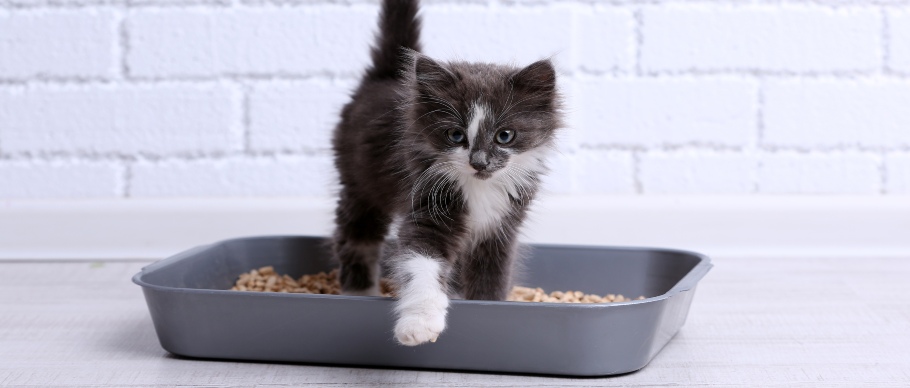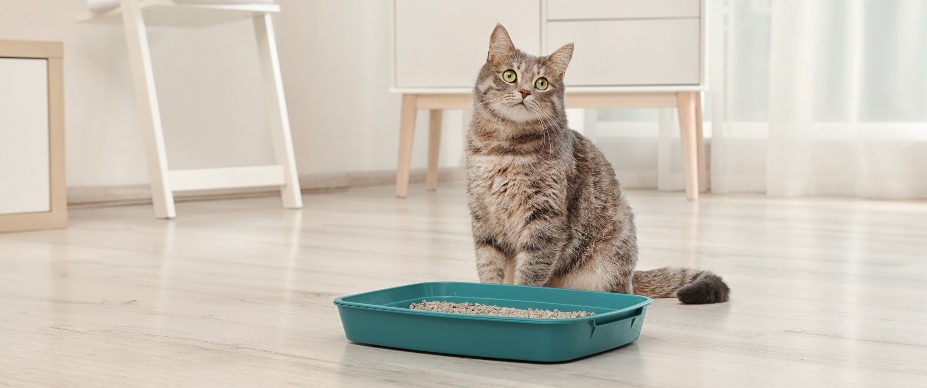How to Train a Cat to Use the Litter Box
One of the best aspects of raising a cat is how quickly they adapt to housetraining. Long before most puppies master the concept of where they should go potty, kittens are reliably heading to their litter boxes, making life easier for everyone at home. It is widely believed that mother cats teach their kittens to use a litter box, but this is not always the case. Whether you have recently adopted a kitten or welcomed home a cat of any age, a certain amount of litter box training will be necessary.
Key Takeaways
- You’ll need to choose a litter box based on your cat’s breed, age, and weight.
- Before training, gather the proper supplies: litter box, cat litter, cat pads, and a litter scoop.
- Clumping litter is the most popular variety, which bonds when wet.
- Cats need enough litter to cover their mess—aim to fill the box with 2 inches of litter.
- Most cats prefer their litter box in a quiet spot away from their food and water.
- If you aren’t finding success, try moving the litter box to another spot or choosing a different litter.
Before You Start: Gather Supplies
Prior to learning how to litter train a cat, you will need to purchase a few supplies:
- Litter box
- Cat litter
- Cat pads
- Litter scoop
Litter boxes come in a variety of styles—from covered spaces to corner-shaped boxes that help maximize space and privacy. Likewise, litter is available in numerous varieties. By far the most popular and convenient is clumping litter, which binds when wet (hence creating a clump). Lastly, a sifting litter scoop is a convenient tool because it allows you to lift away the mess rather than completely changing the litter each day.
Need extra support to keep your cat’s mess in check? Our selection of Wee-Wee Cat Pads will do the trick. Featuring an ultra-plush design that’s comfortable on your cat’s paws, Cat Pads go under the litter box to prevent messes. If you have a litter box system, our Litter Box System Cat Pads will fit inside for advanced odor control and easy cleanup.
In addition, litter boxes come in a variety of sizes. As a general rule, choose a litter box that’s at least one and a half times the length of your cat. Following this trick will allow your furry friend to turn around completely and dig comfortably in several spots.
4 Steps to Litter Box Training

Step #1: The first step to litter box training is proper placement of the box itself. Most cats prefer a quiet, private space. It is also wise to choose a spot that is far from your pet’s food and water, as cats usually prefer not to eliminate in the same area where they eat. Some cats will even refuse to use a litter box if it is too close to their dishes.
Step #2: Cover the bottom of the box with about 2 inches of litter. After eliminating, cats like to cover their mess, so you must give your pet enough litter to complete this task. Once the box is ready, set your cat inside so that they can get used to the smell and feel of the litter. Don’t worry if they don’t eliminate right away, though. Some kitties may need a few minutes to “go.”
Step #3: Continue to place your cat in the box several times a day. The most important times of the day will be directly after your pet has eaten. In fact, kittens will need to go almost immediately after meals. If you catch your cat in the act of eliminating elsewhere, interrupt them and take them to their box. Whenever they go potty in the box, praise them.
Step #4: If you’re not finding success while learning how to litter train a cat, you may need to move the box to a different location or change the type of litter you are using.
RELATED: 8 Tips for a Happy and Healthy Kitty
How to Clean the Litter Box
Whenever you notice that your cat has used the litter box, use your scoop to lift away the mess. When you are finished, you may need to add a bit more litter to ensure that your pet has enough material to dig a hole and then cover it.
A thorough weekly litter box cleaning will help keep it looking and smelling fresh, in addition to helping reduce the chances of your cat getting a UTI from the bacteria. Simply empty the litter into the trash before cleaning the box with a pet-safe cleaner and refilling it with clean litter.
Purr-fect Job!
A little bit of training can go a long way. Remember to learn the schedule of when your cat likes to “go.” Consistency is key! Your feline will be frequenting their litter box on their own in no time.








